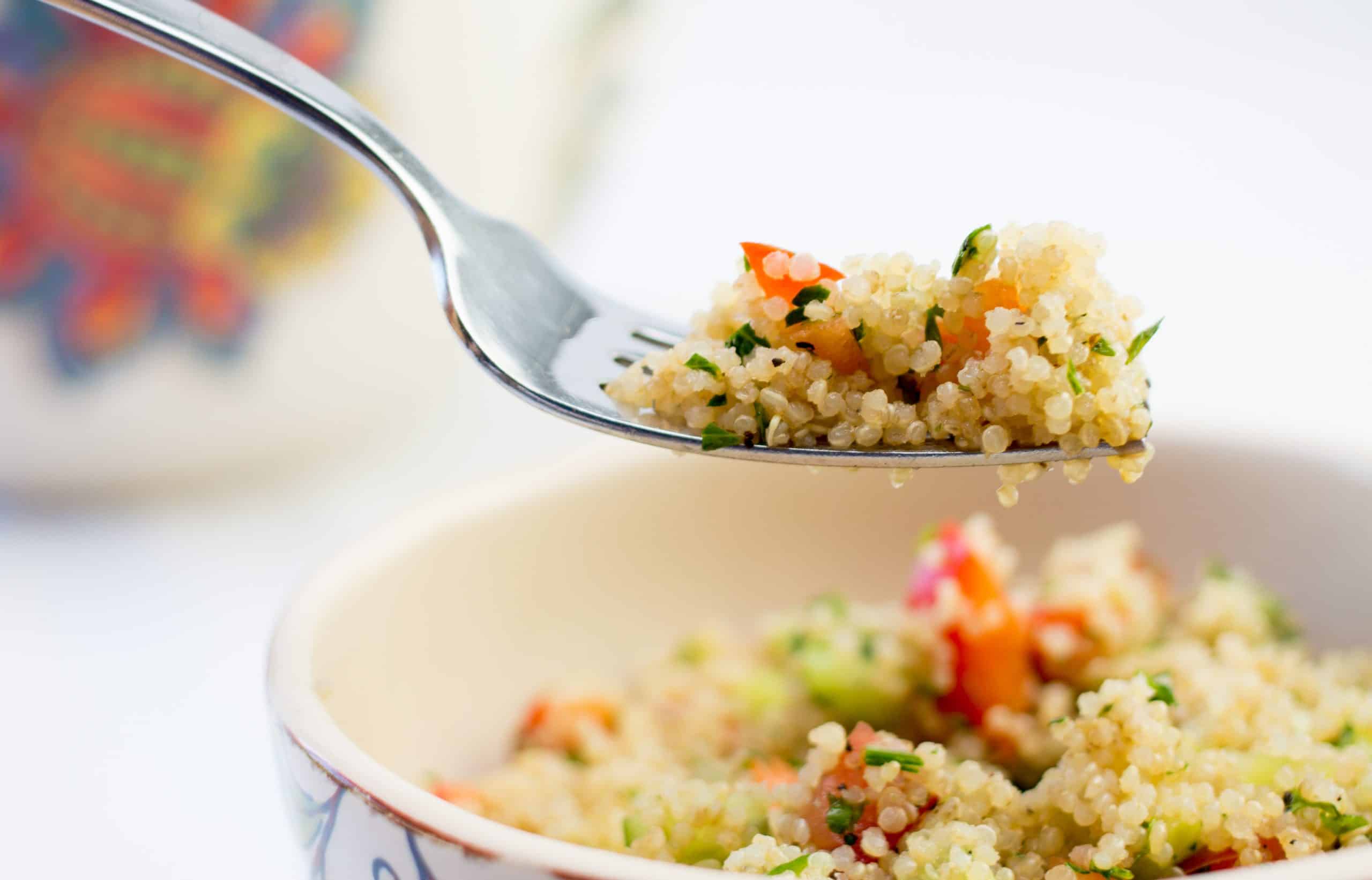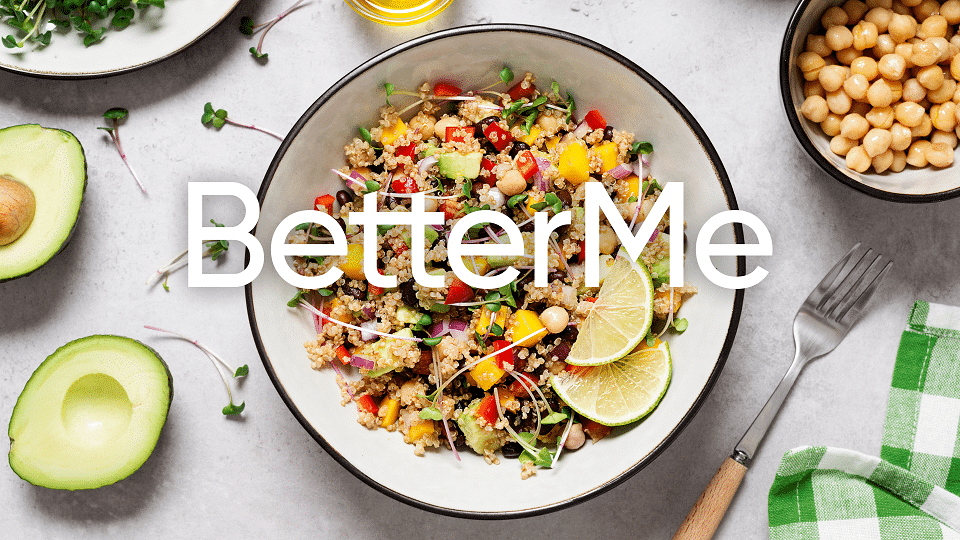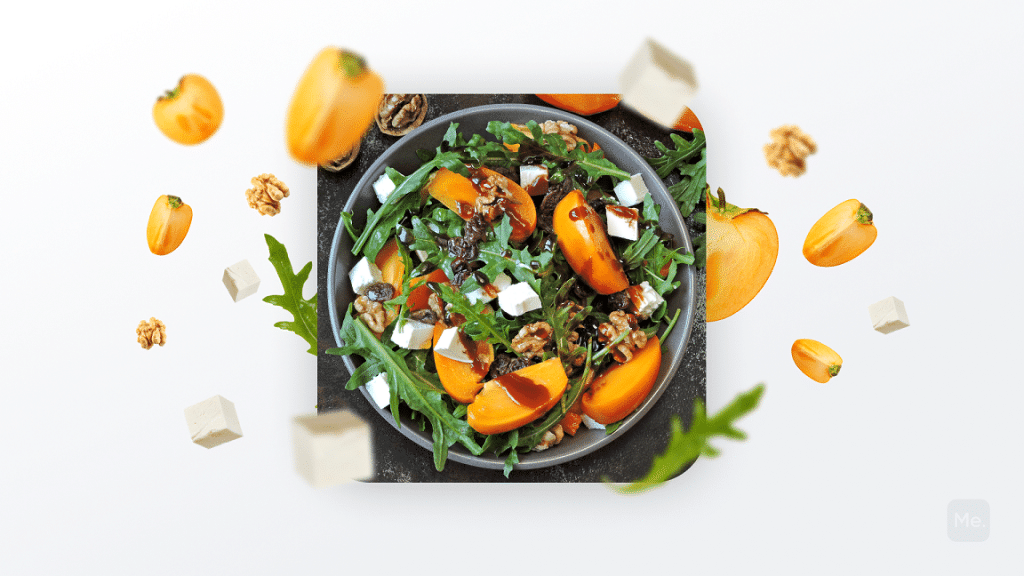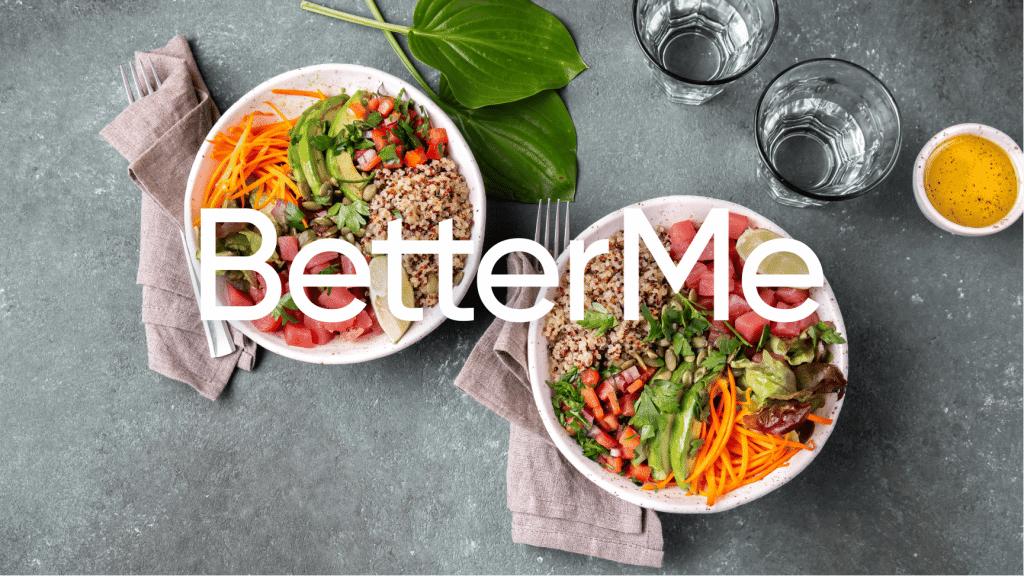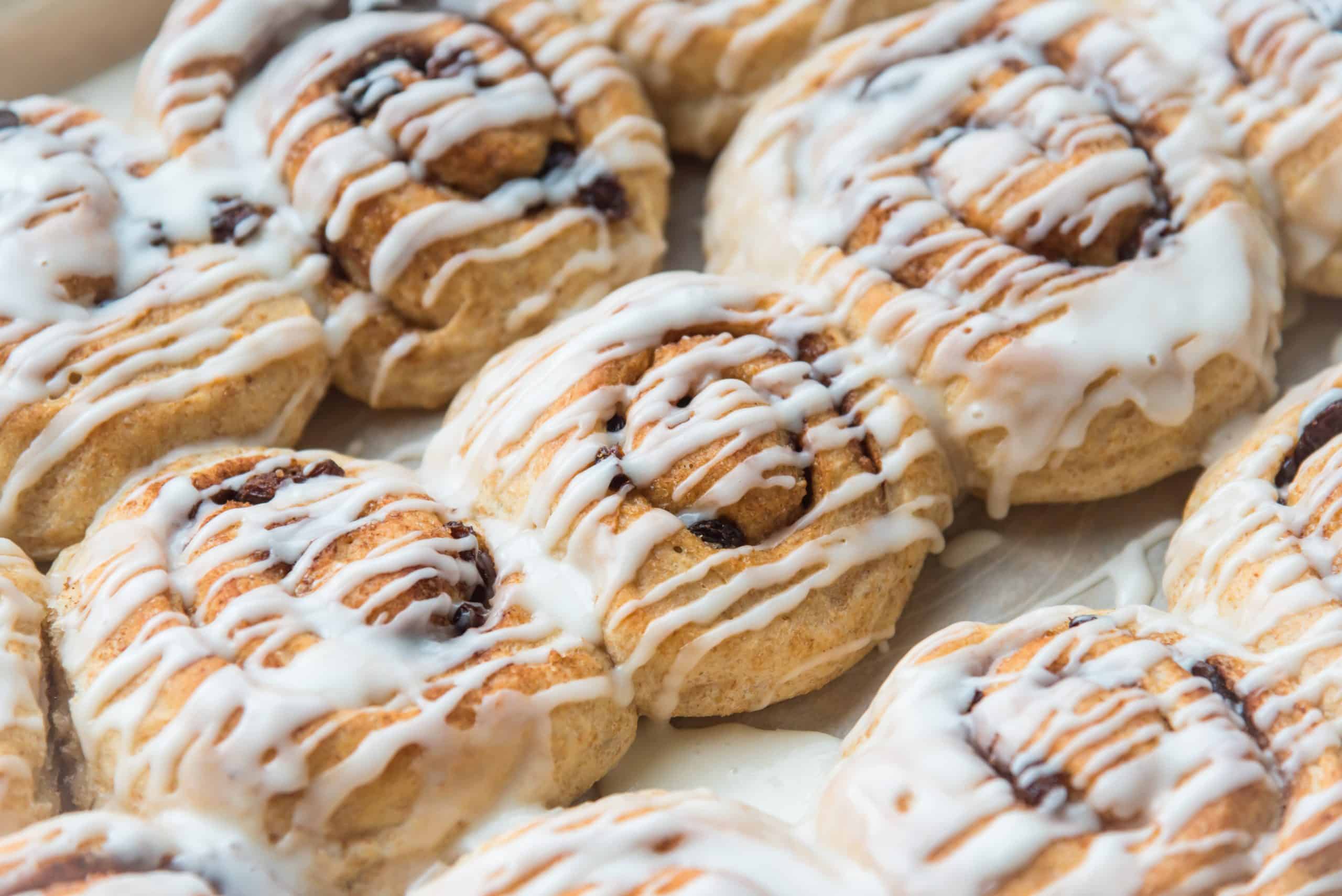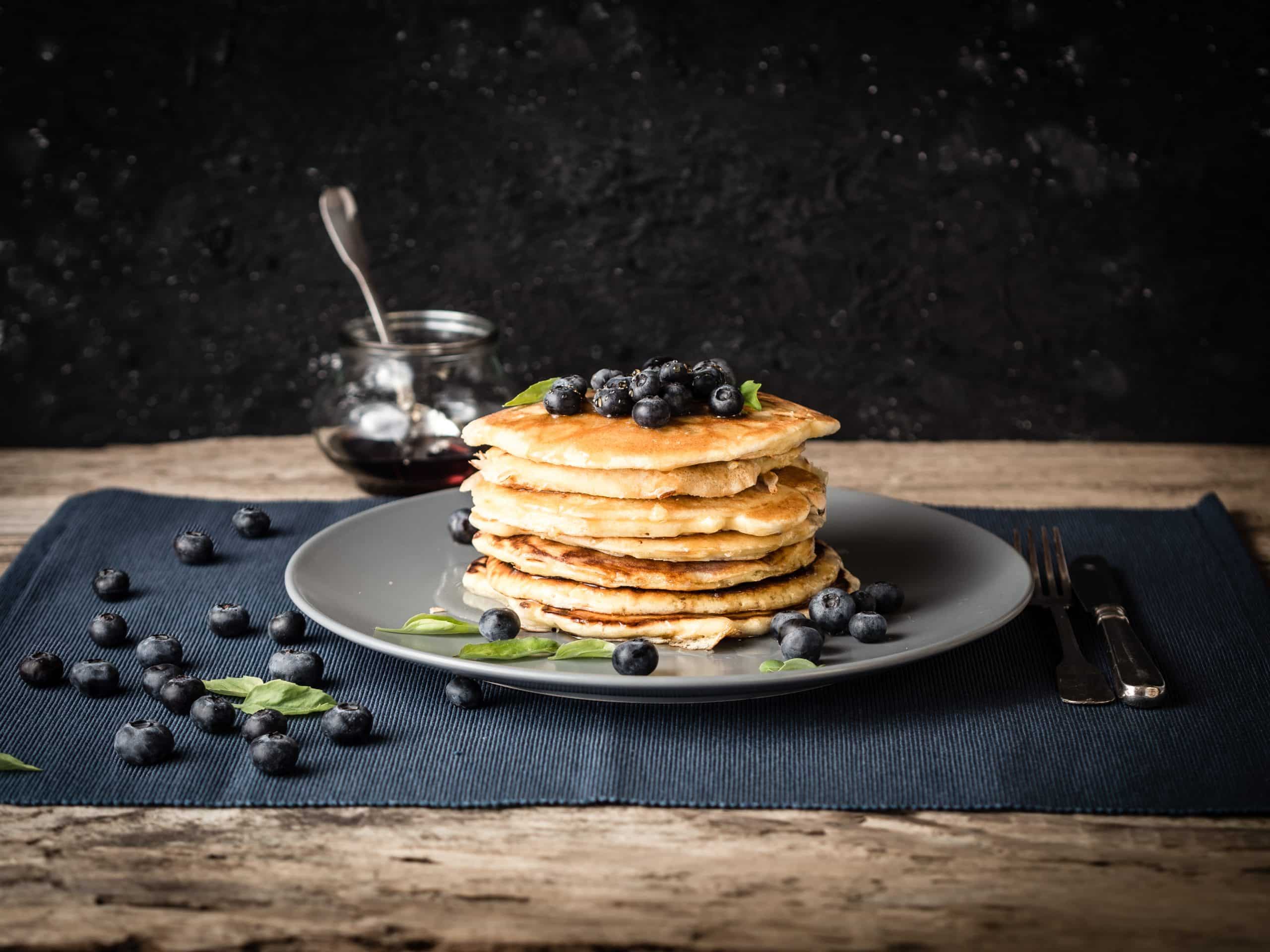For people suffering from celiac disease or non-celiac gluten sensitivity (aka gluten intolerance) finding gluten alternatives to add to their diets is not only a relief but can also be life saving.
Get your personalized
meal plan!
When people suffering from these illnesses consume gluten containing foods, their symptoms can range from simple bloating, gas and constipation to more serious issues like diarrhea, joint pain and malnutrition.
Quinoa is one among the many grains that are often recommended to the above group of people as a safe grain alternative. That said, is quinoa gluten free as advertised? Read on to learn more about this grain, find out if it’s safe to consume everyday, as well as simple recipes to try at home.
Is Quinoa Gluten Free?
Yes, quinoa is gluten free and can be used as an alternative to gluten rich grains such as wheat, barley and rye.
However, while there is naturally no gluten in quinoa there is always a risk of cross contamination. Because many quinoa products are prepared in factories that also make products that contain gluten, cross contamination can happen if things aren’t handled properly.
To avoid this, always check the label to see if your quinoa product is labeled ‘gluten free’.
What Is Quinoa?
Contrary to popular belief, quinoa is not a grain/cereal at all. It is a pseudo grain like amaranth, kañiwa, and buckwheat.
Scientifically known as Chenopodium quinoa, it is a part of the Amaranthaceae plant family. Some common vegetables that belong to the Amaranthaceae (aka Amaranth) plant family include Swiss chard, spinach, as well as garden and sugar beets.
Native to the Andean region of South America, the benefits of this pseudo grain have grown in popularity. So much so that it is now grown all over the world including Peru, Bolivia, The United States, Canada, India and more.
A fun fact about quinoa is that, while this pseudo grain is usually grown and known for the tiny seeds that we consume either whole or as flour, its young leaves can also be eaten as a regular vegetable (16).
When it comes to weight loss, progress is made by inches, not miles, so it’s much harder to track and a lot easier to give up. BetterMe app is your personal trainer, nutritionist and support system all in one. Start using our app to stay on track and hold yourself accountable!
Which Grains Are Gluten Free?
Thankfully, quinoa is not the only gluten free grain out there. Some other grains gluten free options include
Sorghum
Said to have likely originated from Africa, this drought and heat resistant crop is used in both animal feeds and for human consumption.
Sorghum is used in making edible oils, in alcoholic beverages and can be ground into a flour to make porridge, cakes and flatbreads (18). The grain is high in protein, magnesium, phosphorus, potassium, selenium and iron (19).
Oats
They are part of the large Poaceae plant family that consist of other grains like rye, wild rice, millet, barley, and corn. Like sorghum, oats are used as animal feeds and for human consumption. Oatmeal is a common breakfast food for many people all over the world (14).
An important point to note is that while like quinoa, oats are gluten free, they too are usually processed in factories that also handle gluten and thus the risk of cross contamination is high. Always make sure to check if your product package says ‘gluten free’ to avoid any mishaps.
Amaranth
Another pseudo grain like quinoa, amaranth has been consumed for centuries. Its rich history has been traced to Inca, Mayan, and Aztec civilizations where the leaves and seeds were consumed as food and other parts of the plants used for medicinal herbs and as body paint (1).
According to the USDA, one cup of cooked amaranth grains contains 9.35 g of protein, 46 g of carbs and just 3.89 g of fats. The grains are also high in calcium, phosphorus, potassium, magnesium and folate (2). A cup of boiled unsalted amaranth leaves is also incredibly nutritious with higher amounts of calcium and potassium than the same amount of this cooked grain (3).
Teff
Considered one of the smallest grains in the world, it is also part of the Poaceae plant family. Native to Ethiopia and Eritrea, teff grains are used to make porridge and stews, while the flour is used to make injera flatbread (21).
100 g of cooked teff has 101 kcal, 19.9 g carbs, 3.87 g protein and 0.65 g fats. This gluten free grain is also a nutritional powerhouse that is incredibly rich in phosphorus and potassium. It also has calcium and folate, albeit in smaller amounts (20).
Corn
Also known as maize in other parts of the world, it is the most domesticated and widely distributed cereal plant of the Poaceae plant family. While most types of corn are used for human consumption, dent corn is primarily used in the making of animal feeds and other foods manufacturing.
Despite being the third largest plant-based food source in the world, corn is considered nutritionally inferior to the above gluten free and other grains worldwide. It is said to have poor quality protein and while it does contain niacin, it’s tightly bound to the carbs in the grain and thus hard for the human body to absorb (7, 13).
Regardless, corn is still a good source of dietary fiber, antioxidants, and minerals like magnesium, potassium and phosphorus. Fun fact – Aside from the difference in color and taste, white and yellow corn have the same nutritional profile (8, 9).
Is Quinoa Wheat?
No, it is not. Unlike wheat that is a type of grain, quinoa is essentially a seed and thus a pseudo grain. Wheat grasses and grains are also part of the Poaceae plant family (23), while quinoa is part of the Amaranthaceae plant family.
Down to the science of it all, these are two very different products/foods. Quinoa is a gluten free alternative to wheat and wheat products.
Read more: 6 Gluten Free Snack Options You Won’t Regret Having In Your Pantry.
What Makes Quinoa Gluten Free?
The pseudo grain is gluten free as it naturally does not have gluten – a plant protein found in wheat and other grains that triggers celiac disease or a gluten sensitivity.
However, due to the risk of cross contamination, always read the label of your packaging to ensure that the product you are buying is certified as gluten-free..
What Is Better: Quinoa or Oats?
Both oats and quinoa are great whole grain healthy food options to have in your diet whether you are avoiding gluten or not. They are great sources of fiber and a number of minerals and vitamins.
Research has shown that the consumption of whole grains is great for weight loss, improved heart health, lower risk of diabetes, digestive health, reduced risk of certain cancers and other possible health benefits (10, 11).
Despite all these similar benefits, quinoa has one benefit for people on a plant-based diet which oats do not have. . Unlike the latter, quinoa is a complete protein containing all nine essential amino acids that our bodies cannot make on their own (16).
Oats on the other hand do not have enough lysine to qualify as a complete protein with all the essential amino acids. However, as long as you include a variety of plant-based protein sources, you will get all of the essential amino acids even if your individual protein sources are not complete.
Is Quinoa Gluten Free & Anti-Inflammatory?
As explained in the ‘is quinoa gluten free’ section above, this pseudo grain is naturally gluten free. Research has also shown that it contains anti-inflammatory compounds, as well as being a good source of fiber and complete plant-based protein (4, 17).
Can I Eat Quinoa Everyday?
Yes, you can. This pseudo grain is safe to eat everyday. Here are some quinoa gluten free recipes that you can experiment with
Baked Tofu Buddha Bowl with Quinoa
Ingredients
- 1 cup uncooked quinoa
- 1 tsp ground ginger
- 3 tsp tamari
- 1 cup water
- 1 ¼ cups almond milk & coconut milk blend
- ¼ cup peanut butter
- Juice of 1 lime
- 1 tsp hot sauce
- 1 block extra firm tofu (cubed)
- 2 cups shredded cabbage
- 2 cups shredded carrots
- 1 bunch scallion sliced
- ¼ cup chopped cilantro
- Sesame seeds to garnish optional
Directions
- Preheat your oven to 400 °F (204.4 °C)
- In a small saucepan, pour in the quinoa, ginger, 1 tsp tamari, water and 1 cup of almond-coconut milk blend. Let the mixture come to a boil uncovered. Once boiling, reduce the heat, cover the saucepan and let the quinoa slowly simmer for about 15 minutes.
- In a medium-sized bowl, whisk together the peanut butter, ¼ cup of almondmilk coconutmilk blend, 2 tsp of tamari, lime juice and hot sauce. Whisk till smooth and silky.
- Once the mixture is smooth, pour out half the dressing into a small bowl. add your tofu cubes to the bowl with the remaining dressing and toss till the tofu is well coated.
- Dump the tofu cubes onto a greased baking sheet and put them in the oven to bake for 30 minutes. Remember to flip them over at the 15 minute mark to ensure that they get cooked and crispy on all sides.
- After the tofu bakes, mix all your ingredients together in a large enough bowl and enjoy
This recipe makes 4 servings (5)
Calories for 1 serving: 684. Fats: 41 g, Protein: 34 g, Carbs: 57 g
Lemon Maple Mexican Quinoa Salad
Ingredients
For the main body of the salad
- 3 cups cooked quinoa
- ½ cup canned black beans
- ½ cup corn
- 1 medium-sized diced bell pepper
- 1 diced avocado
- 1 cup diced tomatoes
- ¼ medium-sized diced red onion
- ¼ cup chopped cilantro
For the Dressing
- 3 tbsp olive oil
- 2 tbsp lemon juice
- 1 tsp maple syrup
- ½ tsp cumin
- ½ tsp salt or to taste
- ¼ tsp pepper
- a pinch cayenne
Directions
- In a large bowl dump in the quinoa, rinsed black beans, corn, diced tomatoes, peppers, onion, and avocado, as well as the chopped cilantro. Using a salad spatula, mix the ingredients together and set aside
- In a small mason jar, add all the dressing ingredients, stir them a little with a teaspoon and cover the jar. Vigorously shake the jar for about 2 minutes to make sure the dressing is well mixed
- Pour the dressing over the salad. Mix well and serve
This makes 4 servings (12)
Calories for 1 serving: 413. Fats: 22 g, Protein: 10 g, Carbs: 48 g.
Dropping pounds by the dozens without putting yourself through the wringer is everyone’s weight loss pipe dream. But what if we told you that the BetterMe app can make that happen? Keep yourself in prime shape with our fat-blasting workouts, delicious budget-sparing recipes, and body-transforming challenges with our app!
Tuna Feta Quinoa Salad
Ingredients
For the salad
- 3/4 cup cooked quinoa
- 2 (6 oz) cans of tuna (drained)
- 1 cup halved cherry tomatoes
- 1 chopped medium-sized cucumber
- ½ diced red onion diced
- 1 (15 oz) can chickpeas (drained and rinsed)
- ½ cup feta cheese
For the dressing
- ⅓ cup olive oil
- ⅓ cup red wine vinegar
- 2 tbsp lemon juice
- 1 garlic clove
- 2 tsp honey
- 1 ½ tsp dried oregano
- ½ tsp salt
- ½ tsp pepper
Directions
- Pour the dressing ingredients in a mason jar, cover and shake vigorously for 2 minutes. If you don’t have a jar, simply whisk the ingredients in a small bowl till they are incorporated
- Add the salad ingredients in a large enough bowl, pour the mixed dressing on the salad and mix everything together
- Serve and enjoy (22)
Recipe makes 6 servings.
Calories for 1 serving: 381. Fats: 18 g, Protein: 17 g, Carbs: 38 g.
FAQs
Is Quinoa Flour Gluten Free?
Yes, it is. Since quinoa ‘grains’ are naturally gluten free, the flour from them also lacks this plant protein.
Is Bulgur Wheat Gluten Free?
No, it is not. Bulgur is made from par-boiling whole wheat and thus it contains gluten.
Is Buckwheat Gluten Free?
Yes, it is. Like corn, oats, sorghum, teff and quinoa, buckwheat is gluten free. Despite having ‘wheat’ in its name, buckwheat is a pseudo grain that comes from a herbaceous plant (6).
Is Barley Gluten Free?
Is barley gluten free? No, it is not. Barley, wheat and rye are the top 3 primary gluten grains that should be avoided by anyone suffering from celiac disease or has a sensitivity toward this plant protein.
Read more: Is White Rice Gluten-Free? Here Is What Experts Say.
The Bottom Line
Yes, it is. Quinoa is one of the pseudo grains that people who want to avoid gluten in their diets can safely consume.
However, despite being naturally free of this plant protein, processing or handling could lead to cross contamination leading to some gluten getting on to the grain. Always read your packages to ensure that they are marked as ‘gluten free’.
DISCLAIMER:
This article is intended for general informational purposes only and does not serve to address individual circumstances. It is not a substitute for professional advice or help and should not be relied on for making any kind of decision-making. Any action taken as a direct or indirect result of the information in this article is entirely at your own risk and is your sole responsibility.
BetterMe, its content staff, and its medical advisors accept no responsibility for inaccuracies, errors, misstatements, inconsistencies, or omissions and specifically disclaim any liability, loss or risk, personal, professional or otherwise, which may be incurred as a consequence, directly or indirectly, of the use and/or application of any content.
You should always seek the advice of your physician or other qualified health provider with any questions you may have regarding a medical condition or your specific situation. Never disregard professional medical advice or delay seeking it because of BetterMe content. If you suspect or think you may have a medical emergency, call your doctor.
SOURCES:
- Amaranth (2023, britannica.com)
- Amaranth grain, cooked (2019, fdc.nal.usda.gov)
- Amaranth leaves, cooked, boiled, drained, without salt (2019, fdc.nal.usda.gov)
- Anti-inflammatory activity of saponins from quinoa (Chenopodium quinoa Willd.) seeds in lipopolysaccharide-stimulated RAW 264.7 macrophages cells (2014, pubmed.ncbi.nlm.nih.gov)
- Asian Quinoa Bowls With Peanut Baked Tofu (2023, simplyquinoa.com)
- Buckwheat (2023, britannica.com)
- Corn (2017, britannica.com)
- Corn grain, white (2019, fdc.nal.usda.gov)
- Corn grain, yellow (2019, fdc.nal.usda.gov)
- Health Benefits of Dietary Whole Grains: An Umbrella Review of Meta-analyses (2017, ncbi.nlm.nih.gov)
- Health benefits of whole grain: effects on dietary carbohydrate quality, the gut microbiome, and consequences of processing (2021, pubmed.ncbi.nlm.nih.gov)
- Mexican Quinoa Salad (2022, eatsomethingvegan.com)
- Niacin – Vitamin B3 (2023, hsph.harvard.edu)
- Oats (2023, britannica.com)
- Quinoa (2023, britannica.com)
- Quinoa (n.d., hsph.harvard.edu)
- Quinoa whole grain diet compromises the changes of gut microbiota and colonic colitis induced by dextran Sulfate sodium in C57BL/6 mice (2018, ncbi.nlm.nih.gov)
- Sorghum (2023, britannica.com)
- Sorghum grain (2019, fdc.nal.usda.gov)
- Teff, cooked (2019, fdc.nal.usda.gov)
- Teff (2022, britannica.com)
- Tuna Quinoa Salad (2020, cravinghomecooked.com)
- Wheat (2023, britannica.com)

